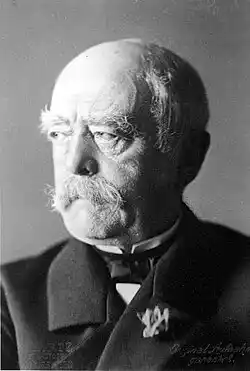The German Empire was the German imperial state which came into existence with the unification of the German states in 1871 and lasted down to the end of the First World War in 1918. This was a substantially larger country than modern-day Germany, including much of western and northern Poland, parts of Lithuania, the provinces of Alsace and Lorraine in what is now eastern France and also some portions of modern-day Czechia. It led to the diffusion of German people into some of these regions of Europe that are extraneous to Germany itself today. More importantly, unification ushered in a period of rapid industrial growth and population expansion in Germany, which in turn led to emigration from Germany to places like the United States and parts of South America. Hence, many people of German heritage in the US, Brazil, Argentina, Chile and other countries today can trace their family’s roots back to ancestors who left Europe in the era of the German Empire.[1]
Research your ancestors on MyHeritage
The German Empire chronnology of eventsThe German Empire chronnology of events
Historically Germany has been paradoxically united conceptually yet divided practically. The Romans, for instance, recognized that ‘Germania’ constituted a distinct region inhabited by Germanic tribes. But these tribes were divided and the Romans could never conquer the whole region, instead fixing their northern border at the River Rhine.[2] Similarly, in the medieval era, Germany was rarely united under a single ruler and in the High Middle Ages fragmented into hundreds of lordships, principalities and small states. Yet conceptually these were tied together by the loose umbrella entity that was the Holy Roman Empire. When that came to an end in 1806 Germany was revealed to be a vast region ruled by several dozen states of varying size. At the same time the growing swell of nationalist sentiment across Europe was leading many political theorists to argue that Germany should be united in order to take its place alongside Britain, France and the Russian Empire as a great European power.[3]

Although there were still dozens of German states in the early nineteenth century, there were realistically only ever two that could lead the movement to unify Germany. These were Austria in the south, which also had an empire that included Hungary, Bohemia, parts of northern Italy, and much of the Balkans, and Prussia in the north, which controlled near all of eastern Germany, large sections of western and northern Poland, Lithuania and pockets of the Rhineland. In between were smaller states like Bavaria, Baden, Hanover and Saxony. Anyone viewing the situation from the vantage point of the post-Napoleonic European order in 1815 would have speculated that Austria would unite the German states, but in the end, owing to the political acumen of the Prussian statesman, Otto von Bismarck, Prussia managed to bind all of the smaller German states to it through wars with Denmark, Austria and France between 1863 and 1871. The end result was the formation of a federal German Empire significantly dominated by Prussia and with the Prussian royal family ascending as the imperial family of Germany.[4]
Unification coincided with a period of robust industrial growth across Central Europe as the economic advances which Britain had made decades earlier arrived swiftly to Germany. This was compounded by the advent of the Second Industrial Revolution, which brought electrification and other developments. Between 1860 and 1900 the region covering the German Empire went from constituting slightly under 5% of world manufacturing output to over 13% in 1900.[5] All of this combined with new advances in medicine and living standards to lead to rapid population growth. Where the population of the new German Empire was 41 million at the time of unification in 1871, it ballooned to nearly 50 million in 1890 and then to 65 million by 1911. As impressive as Germany’s economic growth was in this same period, this still placed a huge strain on the country's resources and many people unsurprisingly decided to leave for pastures new.[6]
Extent of migration associated with the German EmpireExtent of migration associated with the German Empire
An estimated six million people left the German states and the subsequent German Empire between 1820 and 1920 to find new opportunities abroad. A huge majority headed across the Atlantic to the Americas. As one would expect, a large number settled in the United States, though as is often underappreciated, South American countries like Brazil, Argentina, Uruguay, Paraguay and Chile were also popular destinations for German, Irish and Italian migrants during this era as well. This migration was at is most intense up to the end of the nineteenth century. Thereafter rising living standards at home in Germany led to a decline in emigration.[7]
One other feature of migration associated with the German Empire was the Ostflucht or ‘Flight from the East’. The industrial progress which occurred in Germany in the nineteenth century was lopsided and was overwhelmingly concentrated in the west of the country in the Rhineland and the Ruhr region where coal was plentiful, while Berlin also expanded significantly as the capital of a new empire. Owing to this, in the half century or so up to 1907 some 2.3 million people emigrated from eastern Germany and in particular the lands of East Prussia in what is now northern and western Poland and Lithuania to western Germany and the Berlin area. Some of these were Poles as well as Germans. Many people living in western Germany or Berlin today will be able to trace ancestors back to people who originally hailed from Poland and the rural parts of eastern Germany who left their homelands in the nineteenth century in search of jobs in the rapidly industrializing cities of the west.[8]
Demographic impact of the German EmpireDemographic impact of the German Empire

The demographic impact of this migration associated with the German Empire has been substantial both at home and abroad. Domestically the population of Germany remains highly concentrated in the west of the country, with nearly four times as many people living here as in the east. Admittedly, not all of this is owing to the Ostflucht of the nineteenth century. Much of it is also the result of the migration that occurred during the Cold War and the era of the Berlin Wall, though the same factors that created the Ostflucht (more jobs and greater industrialization in the west) still prevail today a century and a half later.[9]
Abroad there are substantial German diaspora communities in the Americas. Some of these are in places one might expect. There are some three and a half million people who have some form of German ancestry in Argentina today. In the United States approximately fifteen million people identify primarily as German Americans. While many of them will be able to trace ancestors to different periods of history, with many arriving to Pennsylvania, for instance, in the late seventeenth and early eighteenth centuries, a large proportion came in the era of the German Empire, particularly to a number of East Coast cities New York and Baltimore. Later Cincinnati, St Louis and Milwaukee became known as the German Triangle as large numbers of migrants headed inland from the coast.[10]
A quarter of a million Germans migrated to Brazil in this era and it is the second most important country within the German diaspora today after the US. More obscure are communities like the substantial German Chilean community. Some 70,000 Germans settled here between the middle of the nineteenth century and the outbreak of the First World War and many Chileans today will be able to trace their ancestors back to the German Empire.[11]
See alsoSee also
Explore more about the German EmpireExplore more about the German Empire
- Germany, Births and Baptisms, 1558-1898 record collection on MyHeritage
- Germany Deaths and Burials, 1582-1958 record collection on MyHeritage
- Germans Immigrating to the United States record collection on MyHeritage
- Researching Your German Ancestors at Legacy Family Tree Webinars
- Moving, moving, moving! Migration Patterns within Germany at Legacy Family Tree Webinars
- Luther, Napoleon and the Kaiser – German History for Genealogists at Legacy Family Tree Webinars
- The Voyages of our German Immigrants at Legacy Family Tree Webinars
References
- ↑ Katja Hoyer, Blood and Iron: The Rise and Fall of the German Empire, 1871–1918 (London, 2021).
- ↑ https://www.worldhistory.org/article/1810/a-visitors-guide-to-romes-frontier-in-germany/
- ↑ https://www.historytoday.com/archive/end-holy-roman-empire
- ↑ Katja Hoyer, Blood and Iron: The Rise and Fall of the German Empire, 1871–1918 (London, 2021), chapter 1.
- ↑ https://human.libretexts.org/Workbench/Modern_World_History%3A_New_Perspectives/05%3A_Economic_Transformation_and_Nation-Building-_1800-1900/5.01%3A_The_First_and_Second_Industrial_Revolutions
- ↑ https://ghdi.ghi-dc.org/sub_document.cfm?document_id=631&startrow=1
- ↑ https://domid.org/en/services-old/essays/essay-migration-history-in-germany/
- ↑ Heberle Rudolph, ‘The Causes of Rural-Urban Migration a Survey of German Theories’, in American Journal of Sociology, Vol. 43, No. 6 (May, 1938), pp. 932–950.
- ↑ https://www.statista.com/statistics/1054199/population-of-east-and-west-germany/
- ↑ https://www.loc.gov/rr/european/imde/germchro.html
- ↑ George F. W. Young, The Germans in Chile: Immigration and Colonization, 1849–1914 (New York, 1974).

